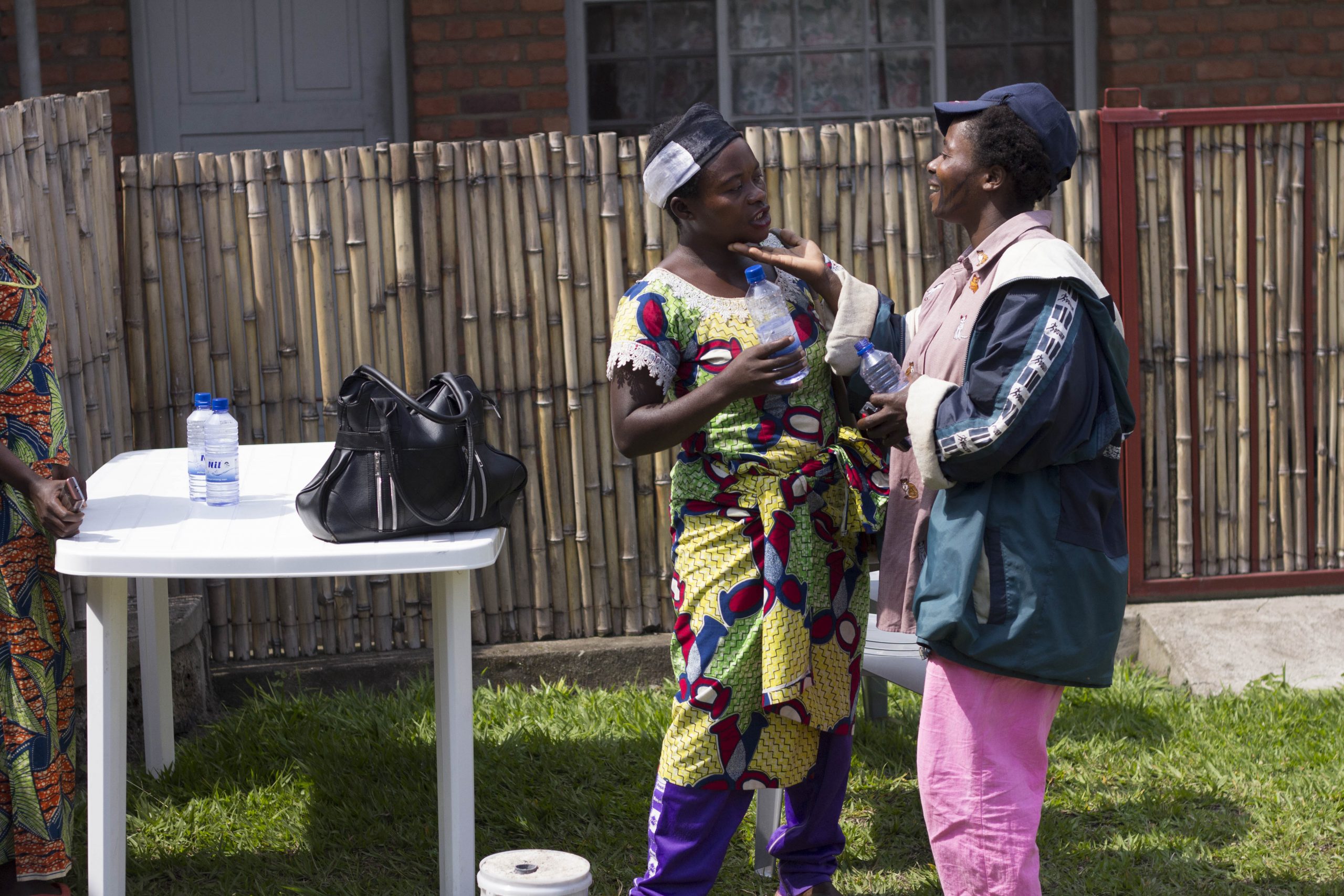EVERYONE CAN BE AN ACTOR, STRENGTHENING YOUR VOICE
AND HAVING FUN EXPLORING WHAT IT FEELS LIKE TO BE THE NEW YOU.The aim is not the performance, but the experience and process.
GAMEChange role-play dramas do not aim to be polished theatre performance. There are no professional actors, no one person leads and everyone participates.
GEMs role-play dramas directly engage ALL participants in identifying and rehearsing possible changes. They subvert existing cultural stereotypes and explore new ways in which women and men can relate to each other. Role play dramas enable people to experience what it feels like to change, how other people feel and what is it like to be the ‘new you’. Participants discover through spontaneous improvisation new ways of addressing inequalities and challenges in their lives.
Role-play dramas can practice peer sharing and facilitation strategies. They can clarify ‘significant changes’ as part of impact assessment looking at past, current and future scenarios.
Participatory role plays and theatre are used to directly engage participants in identifying and rehearsing changes, and new ways in which women and men can relate to each other, and new ways of addressing inequality. Role plays are an important part of developing confidence to change, examining peer sharing strategies and ‘significant changes’ impact assessment looking at past, current and future scenarios. The aim of transformatory drama is not polished performance theatre by ‘good actors’, but EVERYONE BEING AN ACTOR, STRENGTHENING THEIR VOICE AND EXPLORING CHANGE.
!! Much more here on experiential and transformatory drama and details of the many GAMEChange examples.

Challenging Culture:
Role Plays and Theatre
Exploring past, current and future scenarios





























Facilitation and leadership training





Multi-stakeholder negotiation
Multi-stakeholder negotiation: between women and men, young and old, rich and poor, staff/government and ‘beneficiaries’.
• Activities which encourage stakeholders to put themselves in the place of others and experience that position ‘from the inside’ eg in swapping roles of women and men
• Activities which encourage stakeholders to envisage and change how they behave towards others and to practice these new behaviours
• In some cases these activities could be done by stakeholder groups separately at first and then brought together as a collaborative drama involving all stakeholders
Monitoring and Evaluation
Combining drama with the Most Significant Changes methodology and the role play suggestions above, people could be asked to enact what they see as the most significant changes which they have seen in their lives. This could either be for themselves, or there could be a comparison of changes which people themselves have experienced compared with changes which others have perceived.

Role Plays:
questions and process
Designing Participatory Drama: Key questions
- Who participates – communities of people who
know each other? Unsuspecting passers-by? People brought together because they
have come to the theatre? Professional actors and writers? - What are the issues and how are they chosen –
by people themselves or by facilitators/actors/witers - When does participation take place – what are
the critical action points where participation will be most useful? - What form does participation take – how far do
participants control the action and decide the outcomes? - How far does the participation transform
behaviours and enact actual change and build communication and networks rather
than just raise awareness? Are participants encouraged only to imagine change
or to actually practise that change, reflect collectively on the suggestion,
and thereby become empowered to generate social action.
Step 1: What is the issue?
Issues are identified through use of GAMEchange Tools eg from the Gender Justice Diamond or from Visioning or examples of action fruits from the Challenge Action Tree. Common examples would be relating to land, violence and other dimensions of CEDAW and to facilitation and peer training processes – what will participants do when they get home?
Step 2: Who Plays Who and what?
Roles are then decided and allocated through voluntary or random methods – in some cases all participants will be actors, in others they will intervene as ‘spect-actors’. In some cases there will be a gender swap with men playing women and women playing men, or swapping of other statuses eg rich/poor.
Step 3: Audience Participation
At certain key points in the narrative there will be possibilities for audience intervention to pose questions, change the direction of the plot or explore possible solutions or endings. At other points the actors may be asked to change or swap roles.
Step 4: Strengthening Actions and Networks
At the end there should be a process for strengthening the friendships and networks formed and deciding on concrete actions which will be taken. This could be for example through forming small groups to do a Challenge Action Tree or a Road Journey.
Dissemination
In place of the standard theatre for awareness-raising, participatory drama could use:
• the interactive techniques from the Theatre of the Oppressed, engaging the audience directly in the story.
• Invisible Theatre with people who have been through the previous processes then taking their ideas and drama to markets, streets or even local government meetings.

